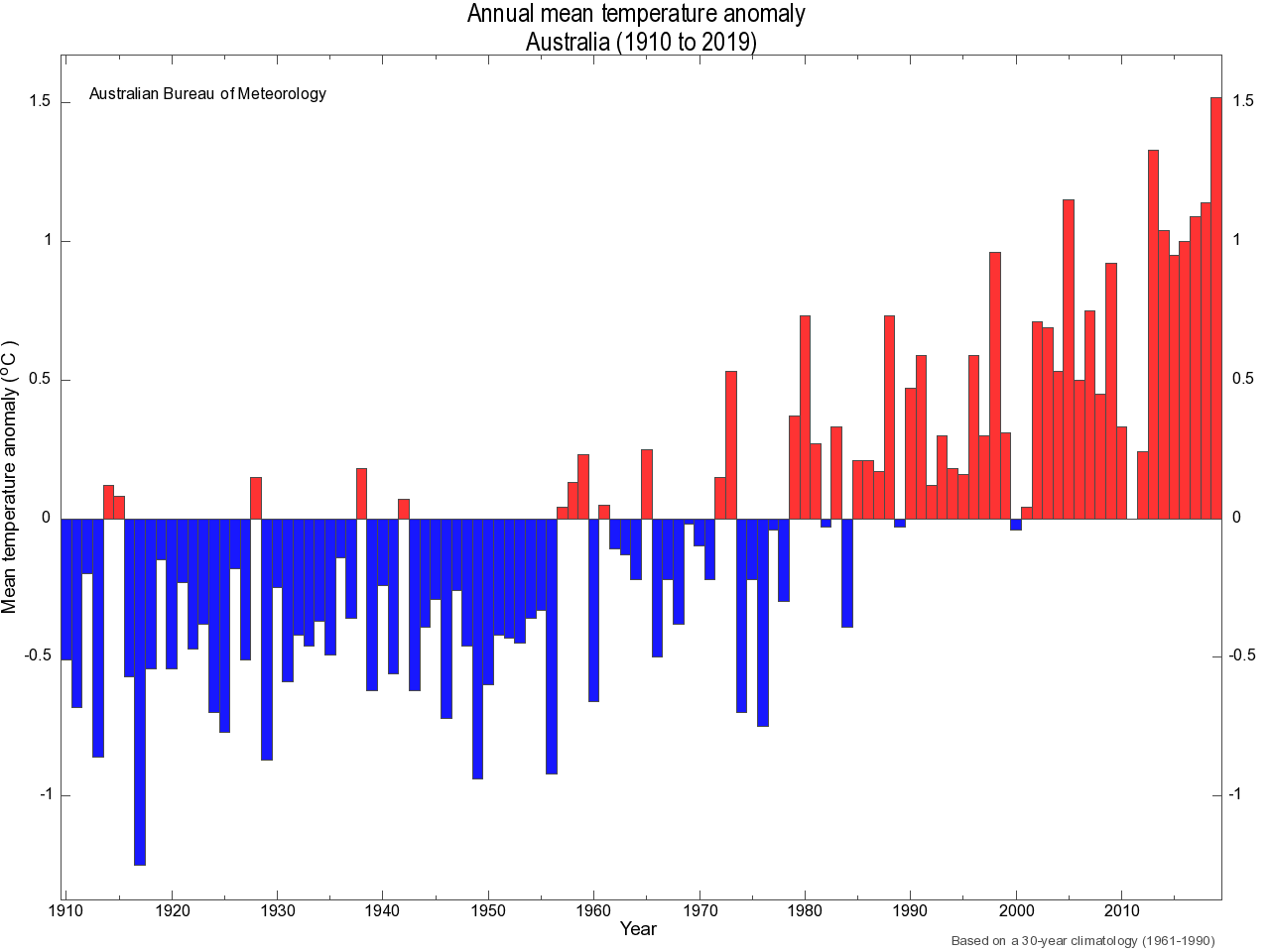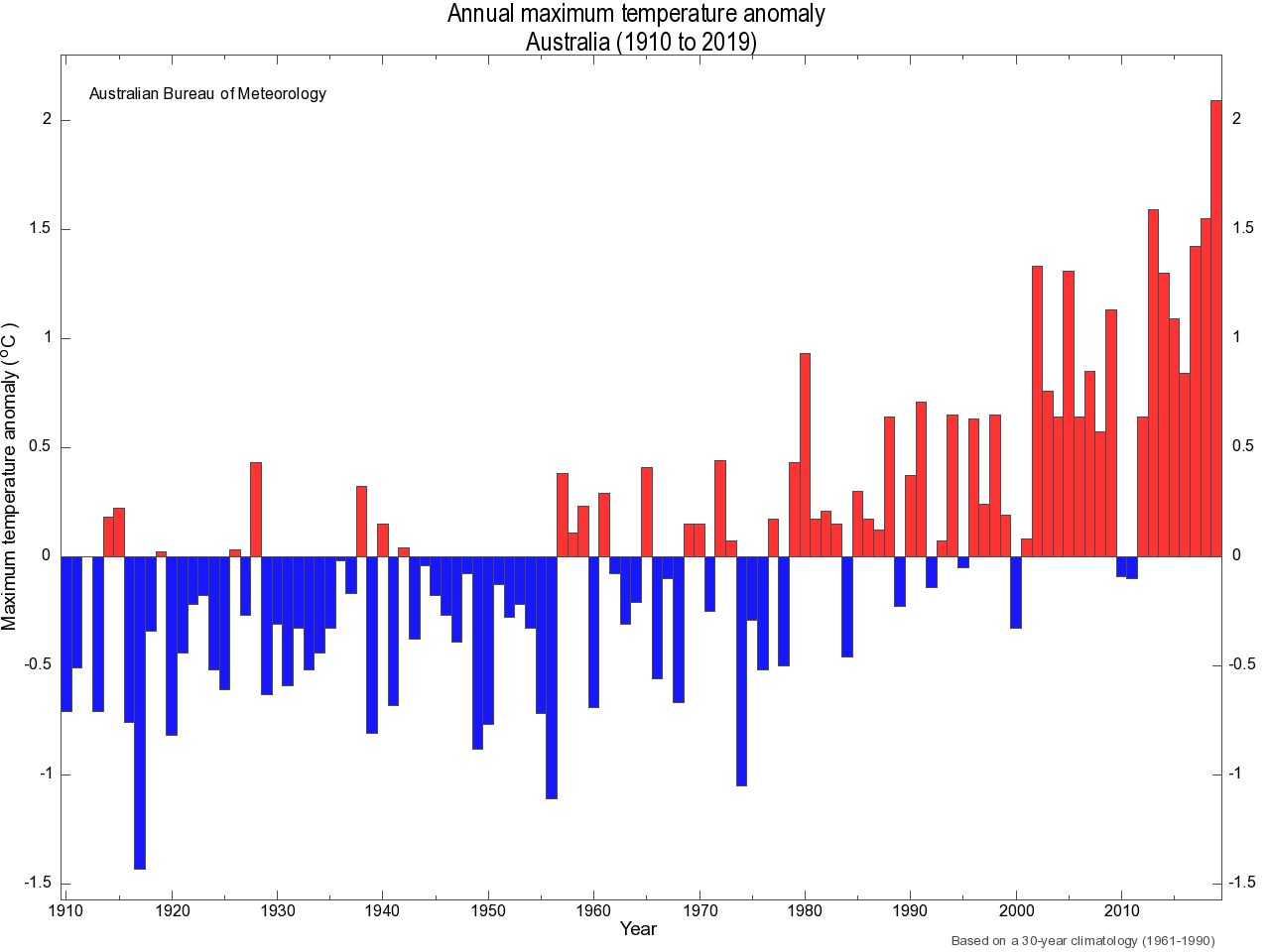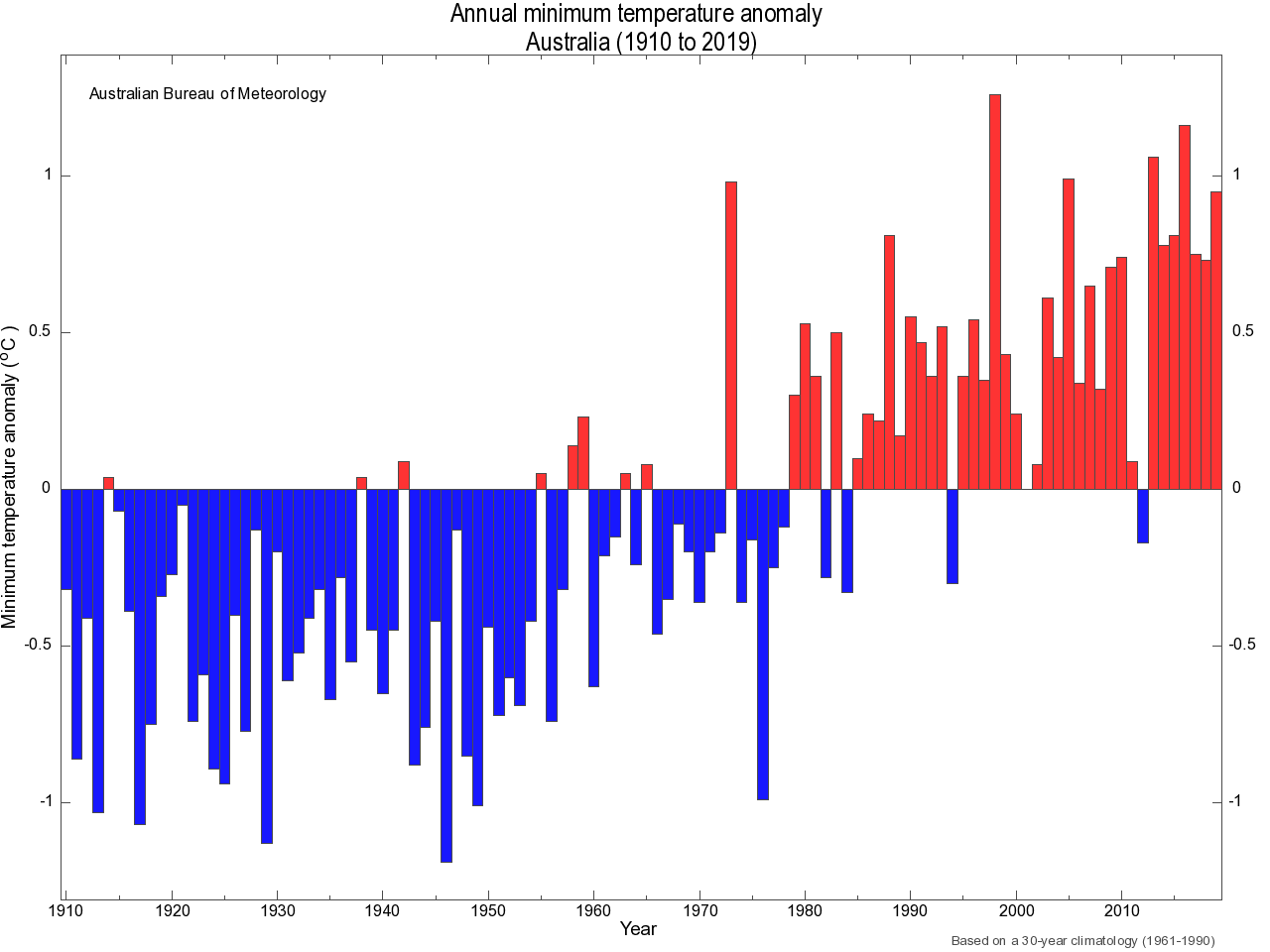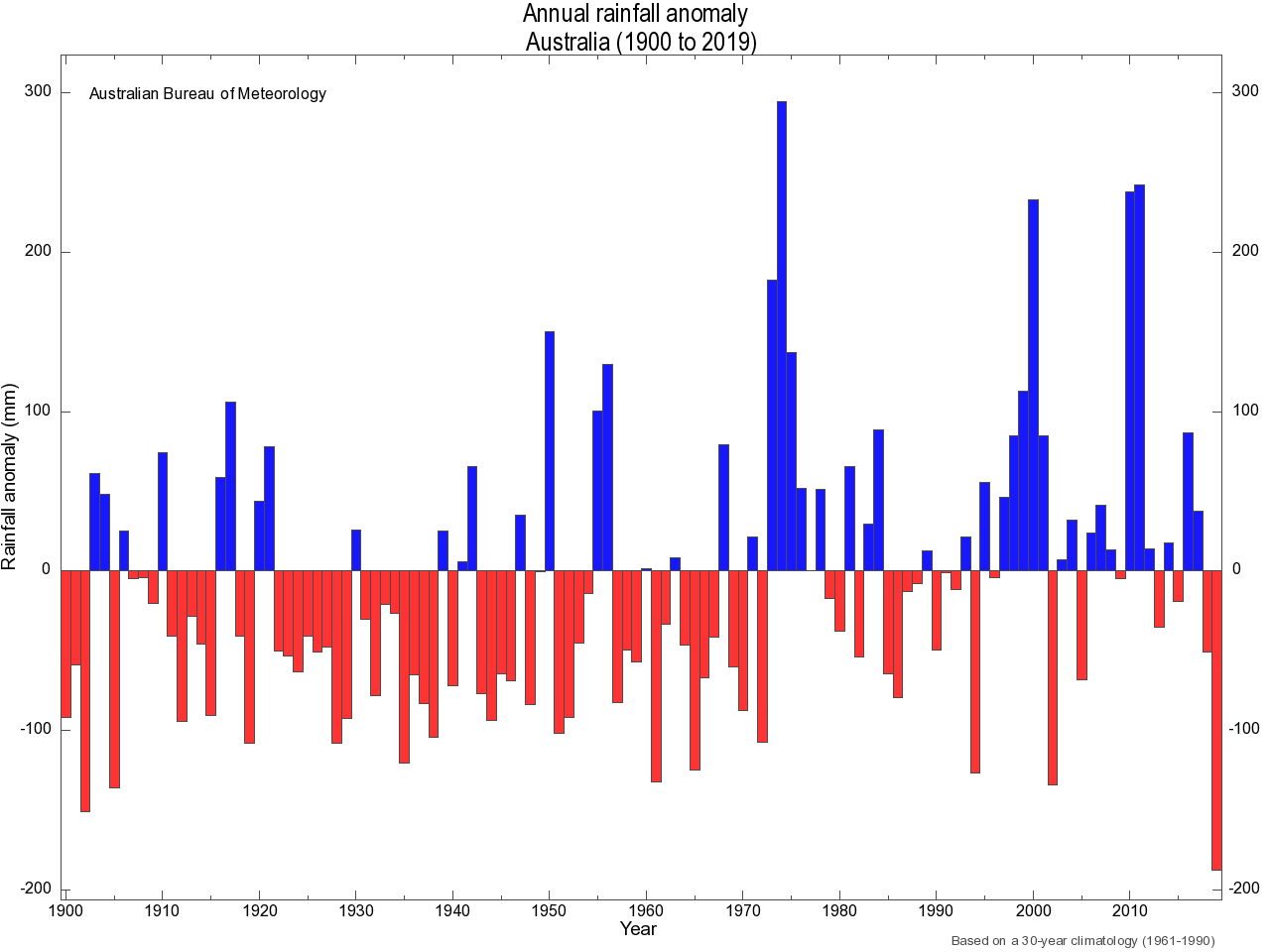Australia's driest and hottest year on record
Preliminary figures reveal that 2019 was Australia's driest and hottest year on record.

According to data published on the Bureau of Meteorology's website, Australia's mean temperature in 2019 was 1.52 degrees above the long-term average. This is Australia's highest national mean temperature in records dating back to 1910, beating the previous record from 2013 by 0.19 degrees.

Image: Australia's annual national mean temperature anomalies from 1910 to 2019. Source: Bureau of Meteorolgoy.
When looking at maximum temperatures alone, the national average was a whopping 2.09 degrees above the long-term average. This is the first time Australia's average maximum temperature has been more than two degrees above the average of the 30-year period from 1961 to 1990. It also beats the previous annual record from 2013 by half a degree.

Image: Australia's annual national maximum temperature anomalies from 1910 to 2019. Source: Bureau of Meteorolgoy.
Australia's average minimum temperature in 2019 was the sixth highest in 110 years of records, coming in at 0.95 degrees above average.

Image: Australia's annual national minimum temperature anomalies from 1910 to 2019. Source: Bureau of Meteorolgoy.
In terms of rainfall, Australia easily had its driest year in records dating back to 1900. The national average rainfall for the year was 187.56mm below the long-term average, beating the previous driest anomaly of -150.73mm from 1902, near the end of the federation drought.

Image: Australia's annual national rainfall anomalies from 1900 to 2019. Source: Bureau of Meteorolgoy.
The temperature data referenced in this article comes from Australia's ACORN-SAT dataset, which is an adjusted dataset designed specifically for studying long-term climate temperature trends in Australia. More information on the adjustment of data can be found here: http://www.bom.gov.au/climate/data/acorn-sat/#tabs=FAQs
While temperature observations in Australia pre-date 1910, this is generally accepted as the earliest date that temperature observations were standardised across the country through the use of a Stevenson Screen.
Rainfall observations prior to 1900 were too sparse in Australia for reliable analysis on a national scale.